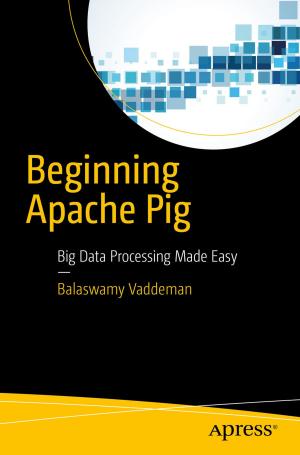Disruption by Design
How to Create Products that Disrupt and then Dominate Markets
Business & Finance, Management & Leadership, Management Science| Author: | Paul Paetz | ISBN: | 9781430246336 |
| Publisher: | Apress | Publication: | December 19, 2014 |
| Imprint: | Apress | Language: | English |
| Author: | Paul Paetz |
| ISBN: | 9781430246336 |
| Publisher: | Apress |
| Publication: | December 19, 2014 |
| Imprint: | Apress |
| Language: | English |
From Eli Whitney to Henry Ford to Ray Kroc to Steve Jobs, market disruptors have reaped the benefits, including fame and fortune. But do you have to be that rare genius whose unique skills can literally change the world? No. Disrupting a market is a discipline that can be learned. Disruption by Design—a handbook for entrepreneurs, CEOs, product developers, innovators, and others who want to build products or create services that systematically disrupt markets—is the first book that shows you how.
There is a huge difference between being an "innovator" and being a "disruptive innovator." Disruptors change the basis for competition in markets, and they end up controlling market share—typically 40 to 80% of the total revenue and half or more of the total profits in the categories they create. But while many market opportunities have disruptive potential, only a small fraction of those ever succeed in disrupting markets. And, too often, those that do disrupt do so by accident.
It doesn’t have to be that way. Disruption by Design conveys lessons learned from successful disruptors, and from the many companies that should have disrupted but failed. Beginning with a quick review of the theory and key elements of the patterns of disruptive innovations and how to identify ideas with disruptive potential, Disruption by Design guides you through the design, build, and go-to-market phases that successful disruptors follow.
Using many examples of disruptive companies and products, this book takes the popular theory of disruptive innovation and drives it down to the level of practical application. It answers the question, "How do I create a disruptive company, product, and culture?" Disruption by Design:<
- Goes beyond describing how disruptive innovation happens, and answers and explains the all-important "why."
- Provides a "where-to-look" guide for discovering disruptive opportunities.
- Shows you how to predict when market disruption is likely.
- Outlines the necessary ingredients and elements of corporate strategy that maximize the probability of being disruptive.
- Provides a roadmap to disruptive success, from the initial idea through product launch to actual market disruption.
- Shows how to stay atop the market and not be the next victim of a new disruptor.
- Includes the Disruption by Design Canvas, for mapping a disruptive business model.
Most important, Disruption by Design articulates a step-by-step process for developing a product and marketing strategy—and a business model design—that maximizes the probability of successful market disruption.
From Eli Whitney to Henry Ford to Ray Kroc to Steve Jobs, market disruptors have reaped the benefits, including fame and fortune. But do you have to be that rare genius whose unique skills can literally change the world? No. Disrupting a market is a discipline that can be learned. Disruption by Design—a handbook for entrepreneurs, CEOs, product developers, innovators, and others who want to build products or create services that systematically disrupt markets—is the first book that shows you how.
There is a huge difference between being an "innovator" and being a "disruptive innovator." Disruptors change the basis for competition in markets, and they end up controlling market share—typically 40 to 80% of the total revenue and half or more of the total profits in the categories they create. But while many market opportunities have disruptive potential, only a small fraction of those ever succeed in disrupting markets. And, too often, those that do disrupt do so by accident.
It doesn’t have to be that way. Disruption by Design conveys lessons learned from successful disruptors, and from the many companies that should have disrupted but failed. Beginning with a quick review of the theory and key elements of the patterns of disruptive innovations and how to identify ideas with disruptive potential, Disruption by Design guides you through the design, build, and go-to-market phases that successful disruptors follow.
Using many examples of disruptive companies and products, this book takes the popular theory of disruptive innovation and drives it down to the level of practical application. It answers the question, "How do I create a disruptive company, product, and culture?" Disruption by Design:<
- Goes beyond describing how disruptive innovation happens, and answers and explains the all-important "why."
- Provides a "where-to-look" guide for discovering disruptive opportunities.
- Shows you how to predict when market disruption is likely.
- Outlines the necessary ingredients and elements of corporate strategy that maximize the probability of being disruptive.
- Provides a roadmap to disruptive success, from the initial idea through product launch to actual market disruption.
- Shows how to stay atop the market and not be the next victim of a new disruptor.
- Includes the Disruption by Design Canvas, for mapping a disruptive business model.
Most important, Disruption by Design articulates a step-by-step process for developing a product and marketing strategy—and a business model design—that maximizes the probability of successful market disruption.















